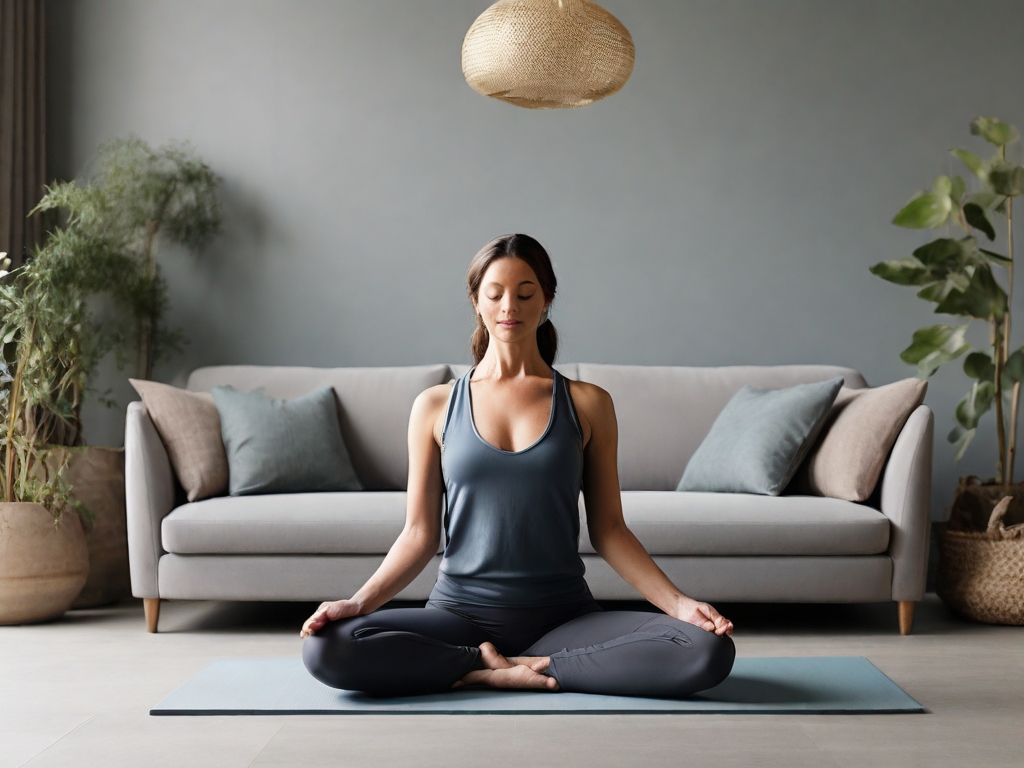
How To Incorporate Regular Screen Breaks for Optimal Eye Health

In the digital age, our eyes are constantly exposed to screens, be it laptops, smartphones, or tablets. This prolonged exposure can lead to digital eye strain, also known as Computer Vision Syndrome. To mitigate this, incorporating regular screen breaks is essential. Here's how you can do it:
Understanding the Importance of Screen Breaks
Our eyes are constantly bombarded with information from various screens in today's digital world. Whether it's a computer at work, a smartphone during the commute, or a television at home, these screens have become an integral part of our lives. This continuous interaction can adversely affect our vision, resulting in a disorder called digital eye strain or Computer Vision Syndrome (CVS).
Indications of CVS encompass dryness and irritation in the eyes, vision becoming blurred, experiencing headaches, and discomfort in the neck or shoulder area. These symptoms can affect our productivity, comfort, and overall quality of life. This is where the importance of screen breaks comes into play.
Taking regular breaks from screen time allows our eyes to rest and recover. It helps reduce the intensity of CVS symptoms and can even prevent their onset. During these breaks, our eyes can blink more, moistening the eyes and reducing dryness and irritation.
Moreover, looking away from the screen allows our eyes to adjust and refocus, which can help reduce the risk of blurred vision and headaches. It also lets us stretch and move around, which can aid in preventing neck or shoulder pain associated with prolonged sitting and screen use.
The 20-20-20 Rule
The 20-20-20 principle is a recommendation that motivates people to pause their screen time every 20 minutes. During this break, they are advised to look at something 20 feet away for 20 seconds. This practice is designed to reduce the eye strain caused by prolonged screen use.
Our blink rate decreases when we stare at a screen for extended periods. This could result in discomfort and a lack of moisture in the eyes. Taking a break every 20 minutes gives our eyes a chance to rest and blink naturally, which can help maintain their moisture.
Looking at something 20 feet away allows our eyes to relax and refocus. When we are looking at a screen, our eyes are in a state of constant focus. This can lead to fatigue and strain over time. By focusing on a far-off point, we enable our eyes to adapt to a varied focal length, which can aid in mitigating the likelihood of eye exhaustion and tension.
The 20-20-20 rule is not just beneficial for our eyes but also for our overall health. Regular breaks allow us to stretch and move around, which can help prevent the physical discomfort associated with prolonged sitting.
Blinking Exercises
Blinking exercises are simple routines that involve consciously blinking your eyes regularly. These exercises are designed to combat the effects of prolonged screen use, which often leads to a reduced blink rate and, subsequently, dry and strained eyes.
Here are some blinking exercises that can be incorporated into your daily routine:
1. Full Blinking: This involves closing your eyes completely for a few seconds and then opening them. This exercise helps to spread tears evenly across the surface of your eyes, keeping them moist and refreshed.
2. Flutter Blinking: This involves blinking your eyes rapidly for a few seconds. This exercise helps strengthen your eyelid muscles and increases the blink rate, relieving eye strain.
3. Gentle Blinking: Gently descend your eyelids and softly raise them. This activity aids in alleviating tension in the ocular muscles and fosters relaxation.
Alongside these exercises, it's advantageous to adhere to the 20-20-20 rule. This entails taking a 20-second break every 20 minutes to look at an item 20 feet distant. Coupled with habitual blinking exercises, this routine can notably enhance eye health and lessen the likelihood of experiencing digital eye strain.
Adjusting Screen Settings
Adjusting screen settings refers to modifying the display characteristics of your digital devices to reduce eye strain and promote eye health. Here are some key adjustments that can be made:
1. Brightness and Contrast: Modifying your screen's brightness and contrast to align with your surroundings' lighting can aid in minimizing eye discomfort. The screen should not be too bright or dark compared to the surroundings.
2. Text Size and Color: Increasing the text size can make reading easier on the eyes. Additionally, dark text on a light background can improve readability and reduce strain.
3. Blue Light Filter: Many devices offer settings to reduce blue light emission. Blue light can cause eye fatigue and disrupt sleep patterns, so using a filter can be beneficial, especially during evening hours.
4. Refresh Rate: A higher refresh rate can result in a smoother image and less flicker, reducing eye strain.
5. Screen Position: The position of your screen can also affect eye strain. The display should be placed lower than the line of sight and at a comfortable distance to avoid undue eye movement and neck tension.
These screen adjustments to your regular screen breaks can significantly improve eye health and comfort. Remember, these adjustments should be personalized to fit your needs and comfort levels.
Regular Eye Check-ups
Regular eye check-ups involve comprehensive examinations conducted by eye care professionals to assess your vision and check for potential eye diseases. Here's why they are essential:
1. Early Detection: Regular eye check-ups can help detect eye problems at an early stage when they're most treatable. This includes conditions like glaucoma and macular degeneration, which might not have noticeable symptoms in the initial stages.
2. Assessing Vision Changes: Our vision can change over time, and regular check-ups ensure that these changes are monitored. This can lead to timely updates in prescription glasses or contact lenses, ensuring optimal vision and reducing strain.
3. Checking for Digital Eye Strain: Digital eye strain has become a common issue with the increasing use of digital devices. Regular check-ups can help identify this condition and suggest appropriate remedies, such as adjusting screen settings or incorporating screen breaks.
4. Overall Health Assessment: Regular eye check-ups can also detect other health issues like diabetes and high blood pressure, which can threaten your eyesight.
Incorporating regular eye check-ups, screen breaks, and appropriate screen settings into your eye health routine can significantly enhance your health. Remember, these check-ups should be scheduled based on your eye care professional's recommendation.
Physical Activity and Eye Health
Engaging in physical exertion, encompassing all types of exercises or bodily movements that consume energy, offers numerous advantages for the well-being of the eyes:
1. Improved Blood Circulation: Regular physical activity enhances blood circulation, ensuring adequate eye oxygen and nutrient supply. This can help maintain healthy cells and tissues in the eyes.
2. Reduced Risk of Chronic Diseases: Engaging in physical exercises aids in weight control and lowers the chances of getting diseases such as hypertension and diabetes, which can negatively impact the health of your eyes.
3. Stress Relief: Regular physical activity can help reduce stress levels. High-stress levels can contribute to conditions like dry eye and twitching.
4. Break from Screens: Integrating physical exercise into your daily schedule can offer a necessary respite from digital screens, thereby lessening the potential for digital eye fatigue.
In the context of screen breaks, physical activity can be a productive and healthful way to spend that time. Simple stretching, walking, or quick workouts can make a significant difference.
Conclusion
Incorporating regular screen breaks is a small step towards better eye health. Remember, your eyes are your window to the world, so take care of them.
Disclaimer: This article is intended for informational purposes only. The content is not intended to be a substitute for professional medical advice, diagnosis, or treatment. Always seek the advice of your physician or other qualified health provider with any questions you may have regarding a medical condition.
Unveiling the Truth: Memory Supplements and Alzheimer’s Disease
Recent Posts

Abortion Pills Availability: Where to Get Them and What You Need to Know
21st Mar 2024
Link Bеtwееn High-Dеnsity Lipoprotеin (HDL) Cholеstеrol and Dеmеntia Risk
19th Mar 2024
Wegovy: The Revolutionary FDA-Approved Weight Loss Drug Preventing Heart Attacks and Strokes
19th Mar 2024
Depression in Women: A Silent Trigger for Heart Attacks and Strokes
19th Mar 2024
TikTok Trend: Should You Worry About the ‘Mystery Virus 2024’?
19th Mar 2024
Bubonic Plague Resurfaces: An In-depth Analysis of the Recent Death in New Mexico
17th Mar 2024
Unveiling the Power of Bariatric Surgery: A Revolutionary Approach to Obesity and Diabetes Management
17th Mar 2024
Unmasking the Invisible Threat: Microplastics and Heart Disease
14th Mar 2024
Unmasking the Impact of Drug Overdoses on Celebrities’ Social Lives
12th Mar 2024
Unlocking Heart Health: How Daily Walking Can Shield You from Heart Failure
9th Mar 2024
Unlock Pain-Free Living: Yoga for Chronic Low Back Pain
9th Mar 2024
RSV Vaccine Mix-Up: Unraveling the Impact on Pregnant Women and Babies
6th Mar 2024
Unveiling the Truth: Memory Supplements and Alzheimer’s Disease
6th Mar 2024
Boosting Protection: CDC Urges Older Adults to Receive Updated COVID-19 Vaccine
4th Mar 2024
Norovirus 2024: Cases Surge Across the US – What You Need to Know
4th Mar 2024
CVS and Walgreens to Begin Dispensing Abortion Pills: What You Need to Know
4th Mar 2024
Stress and Cancer: The Silent Culprit Behind Tumor Growth
1st Mar 2024
White-Nose Syndrome in Bats: A Silent Epidemic Threatening Our Winged Night Guardians
1st Mar 2024
Microwave Oven Safety: Choosing the Right Containers for Your Food
28th Feb 2024
Hate Water? Here Are 5 Healthy Alternatives, According to an NFL Sports Dietitian
28th Feb 2024
IVF Tragedy: A Couple’s Unexpected Loss of Embryos Sparks Legal Battle
28th Feb 2024
Bridging the Health Divide: How Dr. Mandy Cohen Plans to Unite America’s Public Health Efforts
28th Feb 2024
Alabama IVF Ruling: Biden’s Health Expert Engages with Families Amidst Legal Battle
28th Feb 2024
Huntington’s Disease: A Comprehensive Guide to Symptoms, Causes, and Treatment
27th Feb 2024
Buenos Aires Under Siege: Mosquito Invasion Sparks Dengue Fever Concerns
27th Feb 2024
Florida Measles Outbreak: Surgeon General’s Controversial Stance Sparks Concern
27th Feb 2024
Empowering Strategies for Confronting Cancer: Wisdom from a Two-Time Survivor
27th Feb 2024
IVF Embryo Loss: A Heartbreaking Journey and the Quest for Justice
27th Feb 2024
Florida Measles Outbreak: Cases Spread as State Defies CDC Guidance
26th Feb 2024
Millions Suffer from Long COVID: Why Treatments Remain Elusive
26th Feb 2024
Navigating Breast Cancer in the Era of COVID-19: A Comprehensive Guide
26th Feb 2024
Decoding Esophageal Cancer: From Diagnosis to Treatment
26th Feb 2024
Pistachios: The Tiny Nut with Mighty Health Benefits
26th Feb 2024
Stomach Cancer: Silent Killer Strikes Young – Toby Keith’s Battle and What You Need to Know
24th Feb 2024
Asthma Medication Production Halt Forces Parents to Seek Alternatives: A Growing Concern
24th Feb 2024
Dengue Fever: Unmasking the Mosquito-Borne Threat
24th Feb 2024
Allergic Rhinitis: Unmasking the Springtime Culprit
24th Feb 2024
Worcestershire Royal Hospital Faces Norovirus Outbreak: Visiting Restrictions in Place
24th Feb 2024
Unprecedented Genetic Insights: 275 Million New Variants Discovered in NIH Precision Medicine Data
21st Feb 2024
Heart Disease Diet: Nourishing Your Heart for Lifelong Health
21st Feb 2024
Defending Against Measles, Mumps, and Rubella: The MMR Vaccine Explained
21st Feb 2024
PCOS: Your Ultimate Guide to Diet, Mental Health, and Lifestyle
21st Feb 2024
Unlocking Mental Wellness: The Role of Ketogenic Diets in Psychiatric Health
21st Feb 2024
Unlocking Brain Health: Lifestyle Habits to Safeguard Against Dementia
21st Feb 2024
Unlocking the Niacin Mystery: How This B Vitamin Impacts Heart Health
21st Feb 2024
Nocturia: When the Night Interrupts Your Rest
20th Feb 2024
Unlocking the Brain’s Secrets: A Journey into Cognitive Neuroscience
20th Feb 2024
Unlocking the Genetic Secrets: Key Genes Linked to DNA Damage and Human Health
20th Feb 2024
Chronic Wasting Disease (CWD): The Silent Threat to Deer Populations
20th Feb 2024
Menthol in Cigarettes: A Cooling Illusion with Serious Health Implications
20th Feb 2024
Unlocking the Healing Power of Black Seed Oil: From Nigella to Thymoquinone
18th Feb 2024
Sepsis Tragedy: 5-Year-Old Migrant’s Death in Chicago Shelter Sparks Concerns
18th Feb 2024
The Silent Epidemic: Chronic Traumatic Encephalopathy and Its Neurological Toll
18th Feb 2024
Measles Outbreak Alert: Stay Informed and Protected in New South Wales
18th Feb 2024
Invasive Lobular Carcinoma: Unmasking the Silent Threat to Breast Health
17th Feb 2024
Cambodia Reports New Human Cases of Avian Influenza A (H5N1) Virus
16th Feb 2024
Decoding Protein Function: AI, Machine Learning, and the Future of Bioinformatics
16th Feb 2024
Premenstrual Dysphoric Disorder (PMDD): Unmasking the Silent Struggle of Extreme Mood Shifts
16th Feb 2024
Anxiety Disorders: Unmasking the Silent Struggle
16th Feb 2024
The Dark Side of Zyn: How Social Media’s Influence Is Fueling a Youth Epidemic
14th Feb 2024
SGLT2 Inhibitors: A Breakthrough in Diabetes and Kidney Health
14th Feb 2024
Rosemary Oil for Hair Growth: A Natural Remedy to Combat Hair Loss
14th Feb 2024
Decoding the Heart Symbol: A Journey Through History and Love
14th Feb 2024
Spring Forward, Health Backward: The Impact of Daylight Saving Time on Your Well-Being
14th Feb 2024
Rising Drug Overdose Deaths in Cook County: Urgent Concern for Our Youth
14th Feb 2024
Is Housing Health Care? How State Medicaid Programs Are Redefining Well-Being
14th Feb 2024
Oregon Reports First Human Plague Case in 8 Years: Pet Cat Likely Source
14th Feb 2024
Rio de Janeiro Declares Dengue Public Health Emergency Ahead of Carnival
13th Feb 2024
Grant for South African Seniors: A Lifeline for Ageing Citizens
13th Feb 2024
Coronavirus Outbreak at Attleboro Fire Department: 11 Test Positive
13th Feb 2024
Unlocking the Future: 3D-Printed Artificial Cartilage and Stem Cells
13th Feb 2024
Optic Neuropathy: Causes, Symptoms, and Treatment
13th Feb 2024
US States Invest Billions in Bold Health Care Experiment: A High-Stakes Gamble
12th Feb 2024
Nicotine and Your Sex Drive: Unraveling the Connection
12th Feb 2024
10 Natural Ways to Lower Your Cholesterol Levels: Evidence-Based Strategies
12th Feb 2024
Pet Poop Can Be Much More Dangerous Than You Might Realize
12th Feb 2024
Uber Eats Super Bowl Ad Sparks Backlash: Food Allergies and the Power of Responsible Advertising
12th Feb 2024
Double Sequential External Defibrillation (DSED): A Breakthrough in Cardiac Arrest Management
12th Feb 2024
The Silent Struggle: How COVID-19 Impacted Mental Health of US College Students
12th Feb 2024
Bladder Cancer: Unraveling the Silent Threat to Your Health
12th Feb 2024
Super Bowl and Prostate Cancer: A Vital Connection
12th Feb 2024
Rare Human Case of Bubonic Plague in Oregon: A Wake-Up Call for Vigilance
12th Feb 2024
Unlock Passion: How Valentine Week Boosts Intimacy and Connection
10th Feb 2024
Cori Broadus: From Stroke Survivor to Health Warrior - A 40-Lb. Transformation
10th Feb 2024
Does Kimchi Actually Promote Weight Loss? A New Study Reveals The Truth
10th Feb 2024
Magic Hangover Pills: Do They Actually Work?
10th Feb 2024
Passive Smoking and Pets: A Silent Threat to Our Furry Companions
10th Feb 2024
The Truth About Jelqing: Risks and Realities of this Controversial Practice
9th Feb 2024
Unlocking Weight Loss Secrets: How Magnesium Can Transform Your Journey
9th Feb 2024
Unlocking Longevity: The Blood Secrets of Centenarians
9th Feb 2024
The Blood of Exceptionally Long-Lived People Reveals Key Differences
9th Feb 2024
Opioids and Chronic Pain: An Analytic Review of Clinical Evidence
9th Feb 2024
Blastomycosis: A Rare Fungal Infection Spreads Across Unusual Regions in the US
8th Feb 2024
Breakthrough: New Drug CDDD11-8 Could Halt The Growth of Aggressive Breast Cancer
8th Feb 2024
Apixaban: A Game-Changer in Atrial Fibrillation Treatment
8th Feb 2024
Viagra and Alzheimer’s: A Surprising Link That Could Change Lives
8th Feb 2024
Walking vs. Viagra: Which Is Better for Erectile Dysfunction?
8th Feb 2024
Unlocking the Link Between Depression and Body Temperature: What Science Reveals
7th Feb 2024
Why Aren’t Americans Getting the New COVID-19 Vaccine?
7th Feb 2024
Burgers and Pizzas Could Be Putting You at Risk of Alzheimer’s: What You Need to Know
7th Feb 2024
Plastics Linked to Thousands of Preterm Births in the U.S., Study Finds
7th Feb 2024
Dry Eyes in Winter: Causes, Treatment, and Prevention
7th Feb 2024
The Mind-Skin Connection: How Psychological Stress Impacts Your Dermatology
6th Feb 2024
Fueling Your Run: The Ultimate Runner’s Diet Guide
6th Feb 2024
Frostbite Management: A Comprehensive Guide to Prevention and Treatment
6th Feb 2024
The Unexpected Impact of Troubled Marriages on Your Health
6th Feb 2024
Syphilis: A Preventable and Curable Threat to Public Health
6th Feb 2024
New Estimates Reveal: 1 in 5 People Worldwide Will Develop Cancer
5th Feb 2024
Poonam Pandey’s Fake Death Sparks Debate on Cervical Cancer Awareness: A Closer Look
5th Feb 2024
Pharma Companies Raise Prices on Over 900 Drugs Amid ‘Historic’ Negotiations
5th Feb 2024
Revolutionary Brain Implant for OCD and Epilepsy: Amber Pearson’s Journey
5th Feb 2024
New Drug Shows Promise in Preventing Diabetic Eye and Kidney Complications
5th Feb 2024
Recalled Philips Sleep Apnea Machines Linked to Over 500 Deaths: FDA Issues Urgent Warning
3rd Feb 2024
Medicare Drug Price Negotiations Begin: Key Drugs and Their Impact
3rd Feb 2024
Potassium-enriched salt can Reduce Blood Pressure And Heart Attacks
3rd Feb 2024
Unlocking the Secrets of the Common Cold: A Guide for Parents
3rd Feb 2024
Seattle's Battle with Candida Auris: A Public Health Perspective on the Fungal Outbreak
3rd Feb 2024
Philips Halts U.S. Sales of Sleep Apnea Devices Amid Safety Concerns
30th Jan 2024
Gluten-Free Diet: A Comprehensive Guide on Celiac Disease and Path to Weight Loss
30th Jan 2024
The Nocebo Effect: A Deeper Dive into Medicine's Silent Side Effect
30th Jan 2024
Dangers of 'Gas Station Heroin': FDA's Warning on Tianeptine Supplements
30th Jan 2024
Sleep Patterns Across the U.S.: Discover the States Where People Are Getting the Most Sleep
30th Jan 2024
The Mental Health Crisis Among Youth
29th Jan 2024
Unlocking the Secrets of Sperm Production and Regeneration: A Deep Dive into Male Fertility
29th Jan 2024
COVID-19 and Newborns: Unvaccinated Parents and the Risk of Respiratory Distress
29th Jan 2024
CDC's Urgent Alert: Rising Measles Cases Put Health Care Workers on High Alert
29th Jan 2024
Levemir Discontinuation: A Blow to Diabetes Patients
29th Jan 2024
Lipids: The Unsung Heroes of Health
27th Jan 2024
Navigating the Journey of Smoking Cessation: The Role of Drinks and Nicotine
27th Jan 2024
The Impact of Diet on Ageing: Foods That Accelerate the Ageing Process
27th Jan 2024
Avian Influenza Outbreak in California: A Comprehensive Report
27th Jan 2024
Unveiling the Secrets of Pine Nuts: Health Benefits, Recipes, and More
27th Jan 2024
Exercise: Harnessing the Power of Physical Activity to Manage Menopause Symptoms
26th Jan 2024
Bleach: The Unsung Hero in the Fight Against Bacteria
26th Jan 2024
Home Remedies for Common Ailments: A Scientific Perspective
26th Jan 2024
Chili Peppers: Unleashing the Heat for Pain Management
26th Jan 2024
Uncoated Aspirin: A Natural, Unexpected Acne Treatment
26th Jan 2024
The Hidden Dangers of Snow Shoveling: A Health Perspective
26th Jan 2024
The Health Consequences of Sports Fandom: A Detailed Exploration
25th Jan 2024
Embracing Ayurveda for Kidney Health: Natural Ways to Strengthen Your Kidneys
13th Jan 2024
Mastering Body Recomposition: Building Muscle and Losing Fat with Protein-Rich Meals
13th Jan 2024
Unveiling Magnesium: The Essential Mineral Powering Our Bodies
13th Jan 2024
The Emergence of Weight Loss Drugs in 2024: Exploring The Surge in Market Demand
8th Jan 2024
Unraveling Nutrient Intake Mechanisms and Amino Acid Strategies in Mouse Epiblast Development
3rd Jan 2024
The Role of 3D Chromatin Architecture in Disease Development
3rd Jan 2024
Unravеling thе Link Bеtwееn High-Dеnsity Lipoprotеin (HDL) Cholеstеrol and Dеmеntia Risk
1st Jan 2024
Top 20 Health Questions Answered for 2024
1st Jan 2024